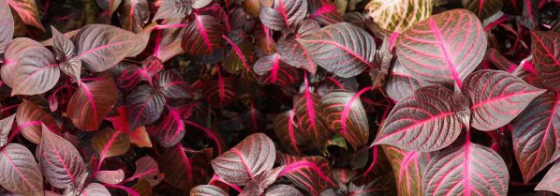
Iresine: growing and care tips
Contents
Iresine in a nutshell
- Iresine is a house plant native to South America, particularly Brazil.
- It is valued for its colourful foliage, in shades ranging from crimson red to purple, sometimes enhanced with pink or yellow veins.
- Compact and bushy, it typically reaches heights of 30 to 50 cm, making it ideal for pots and plant displays.
- Easy to care for and propagate, it is an excellent house plant to bring warmth and originality.
- Perfect for bright rooms, it enjoys good light without prolonged direct sunlight.
- Highly decorative in combinations, it pairs wonderfully with plants that have deep green or variegated foliage.
A word from our expert
Iresine, sometimes referred to as “blood plant” or “blood herb”, is a houseplant that is still relatively unknown but very decorative due to its colourful foliage, like Iresine herbstii ‘Blazin’ Rose’. Belonging to the Amaranthaceae family, it features contrasting leaves in shades of purple, red, and green, sometimes tinged with yellow depending on the variety. It adds a vibrant and warm touch to interiors, even in the heart of winter.
Ideal for plant enthusiasts seeking a touch of originality, the Iresine adapts perfectly to pot cultivation, provided it receives sufficient light and a mild temperature. Its rapid growth and bushy appearance also make it an excellent candidate for creating dynamic plant compositions or brightening up a windowsill.
In this article, we will explore in detail the botanical characteristics of the Iresine, the different varieties that can be grown indoors, the best planting practices, the optimal exposure for Iresine, as well as all the care tips for Iresine to keep this plant in top condition. We will also look at how to easily propagate it, pair it with other decorative plants, and prevent potential issues related to pests and diseases.
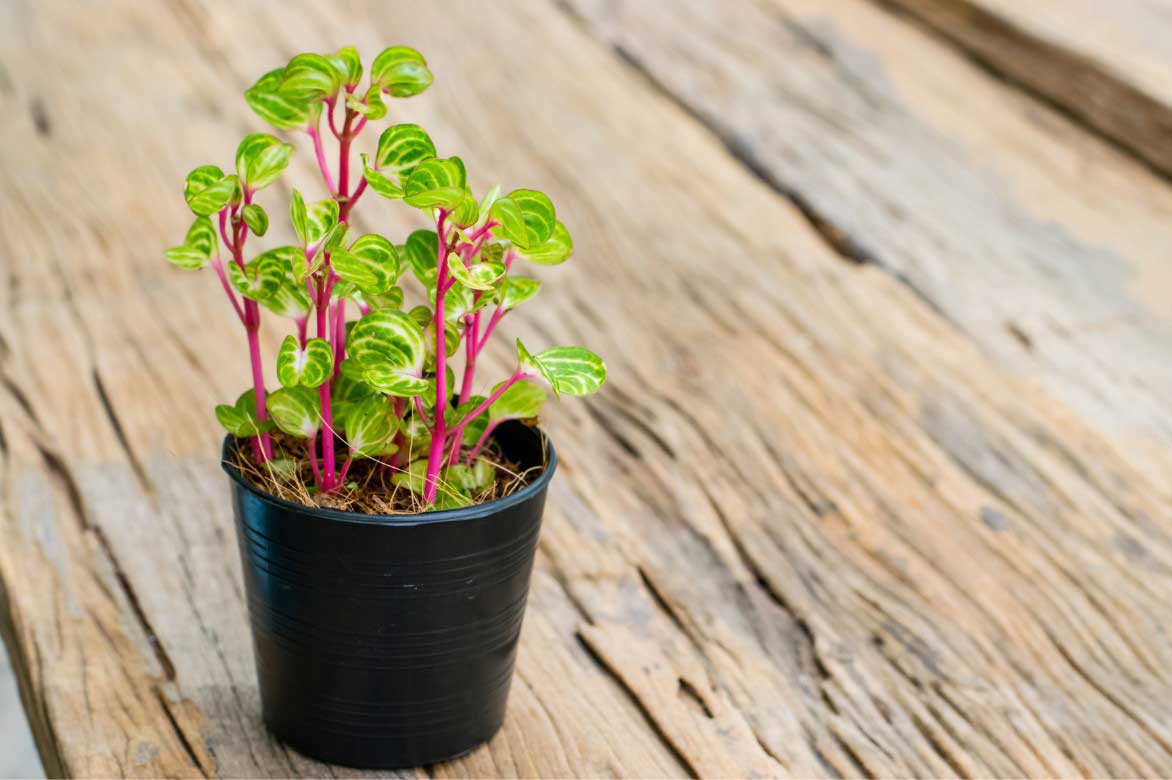
Iresine herbstii
Description and botany
Botanical data
- Latin name Iresine herbstii (most common species indoors)
- Family Amaranthaceae
- Common name Iresine, bloodleaf, herb of blood
- Flowering Rare indoors, flowering in white panicles
- Height 30 to 50 cm
- Exposure Bright light without prolonged direct sunlight
- Soil type Rich, light, well-drained potting mix
- Hardiness Not hardy, minimum temperature 12 °C
Iresine is native to tropical and subtropical regions of America, particularly Brazil, Peru, and Ecuador. In its natural habitat, it grows in humid, bright areas, enjoying a warm climate year-round. It is a non-hardy plant: it cannot tolerate cold and can only be grown outdoors in our latitudes during the warm season, in summer pots. Indoors, however, it finds its place perfectly, as long as the temperature and light are suitable.
Indoors, Iresine appears as a herbaceous, bushy, and compact plant. It typically reaches between 30 and 50 cm in height, with a similar width, making it a compact plant that is easy to integrate into a plant display. Its growth is rapid: in one season, it can double in size, provided it has a rich substrate and regular care. Its stems are thin, slightly branched, and often tinged with red.
The true charm of Iresine lies in its ornamental foliage. Its leaves, oval to rounded, sometimes heart-shaped, measure 3 to 8 cm. Their texture is smooth and shiny, and their vibrant colours vary according to the varieties: they can be bright red with carmine veins, deep purple, green punctuated with yellow or pink, or display a spectacular mix of several shades. These intense colours make Iresine an ideal plant to brighten up a somewhat dark corner or to add an exotic touch to a room.
Flowering in Iresine rarely occurs indoors, as the necessary conditions (strong light and constant warmth) are difficult to achieve. When it does occur, the plant produces panicles at the top of its stems, consisting of countless small white or greenish flowers, with a very light and airy appearance.
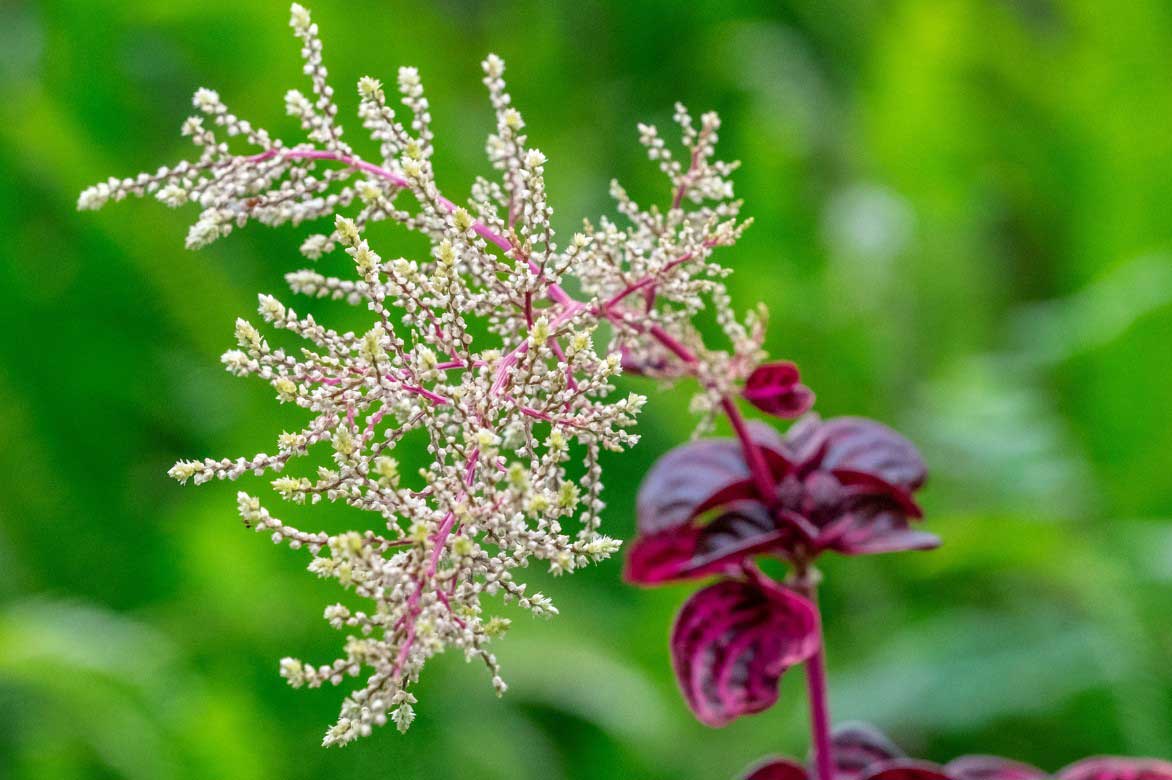
The flowering of Iresine
Iresine is a frost-sensitive plant: it cannot withstand temperatures below 12 °C. Indoors, it enjoys a temperature range of 18 to 24 °C, close to the conditions of its native habitat. It also appreciates ambient humidity, making it an excellent candidate for bright living spaces or temperate conservatories. In an atmosphere that is too dry, its foliage may lose its vibrancy and the edges may turn brown.
The genus Iresine includes about 30 species, but in indoor cultivation, two of them stand out for their popularity and ornamental qualities: Iresine herbstii and Iresine lindenii. Each offers cultivars with spectacular foliage, perfect for decorating a bright interior.
- Iresine herbstii: This is undoubtedly the most common species in our interiors. It is distinguished by its broad, round to oval leaves, which are very colourful. This species is also known as “bloodleaf” due to its deep shades of red and purple. Popular varieties: ‘Aureoreticulata’: bright green foliage veined with golden yellow; very luminous, ideal for adding clarity to a display. ‘Brilliantissima’: a highly decorative variety with dark pink to purple leaves, carmine veins. Highly valued for its rapid growth and powerful visual impact. ‘Wallisii’: purple leaves with metallic reflections, more compact than the others, ideal for small spaces.
- Iresine lindenii: Less common but equally interesting, this species is distinguished by its more elongated, almost lanceolate leaves, which are highly veined. It offers a more slender silhouette and a slightly more “wild” appearance than I. herbstii. Notable variety: ‘Formosa’: fine dark purple foliage with bright pink veins; gives a very graphic and modern look to displays.
Other species of the genus Iresine can sometimes be found in botanical collections or with certain specialised producers, such as Iresine diffusa or Iresine celosia, but they are rare in typical indoor cultivation. They generally have a more slender habit and less decorative foliage.
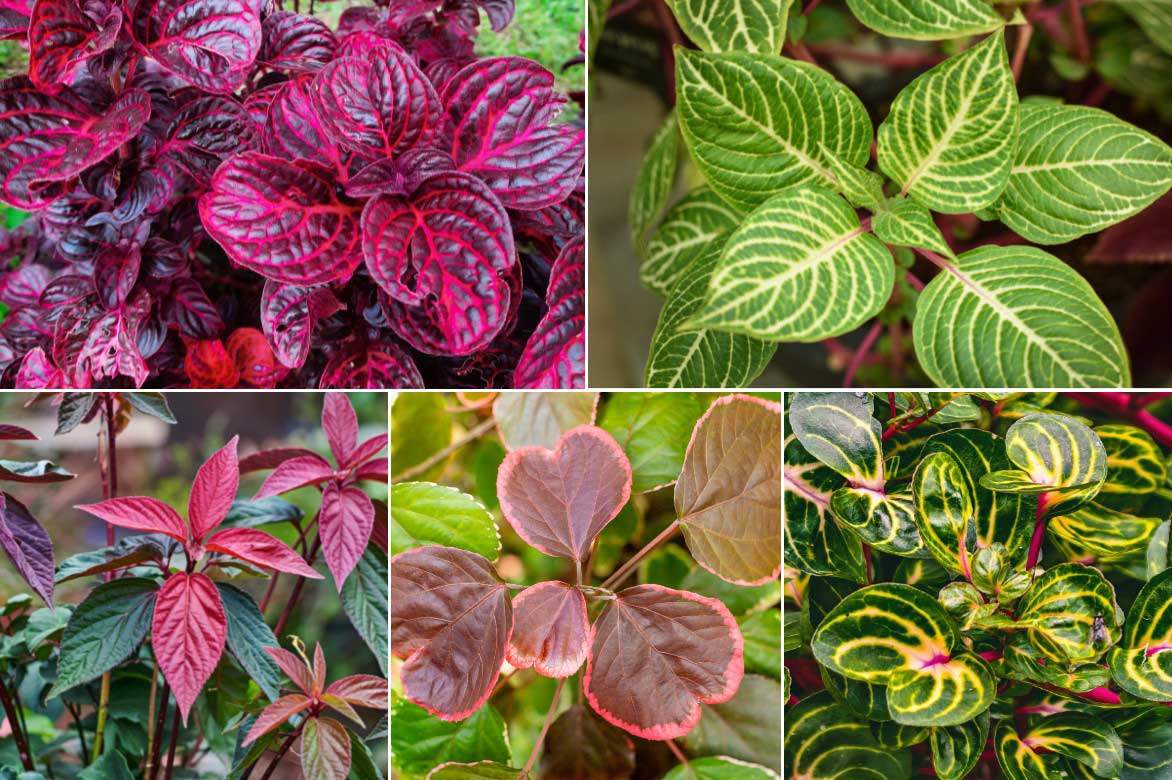
Depending on the varieties, Iresine offers a beautiful diversity of foliage, in shades of red, purple, green, and yellow.
The main species and varieties
[product sku=”238501″ blog_description=”This variety features beautiful ovate purple leaves, veined with bright pink. It has a lovely compact and bushy habit, and immediately catches the eye!” template=”listing1″ /]
Planting Iresine in pots
Where to install Iresine?
Light plays a crucial role in the proper development of Iresine. This tropical plant requires a bright environment to maintain the intense vibrancy of its foliage. However, direct exposure to sunlight for long hours, especially in summer, can cause leaf burn, which detracts from its beauty.
The ideal location is near a window facing east or west, where it will benefit from gentle, bright light without excess. It also thrives very well in a conservatory or sunroom, provided it is protected from cold drafts. Inside the house, a naturally bright room, such as a spacious living room or a well-exposed kitchen, is also an excellent spot.
If the plant lacks light, its colours tend to fade, and its habit becomes elongated and less dense. In this case, supplementary lighting, such as an LED grow light, can be very helpful, especially during the winter months when natural light is scarce.
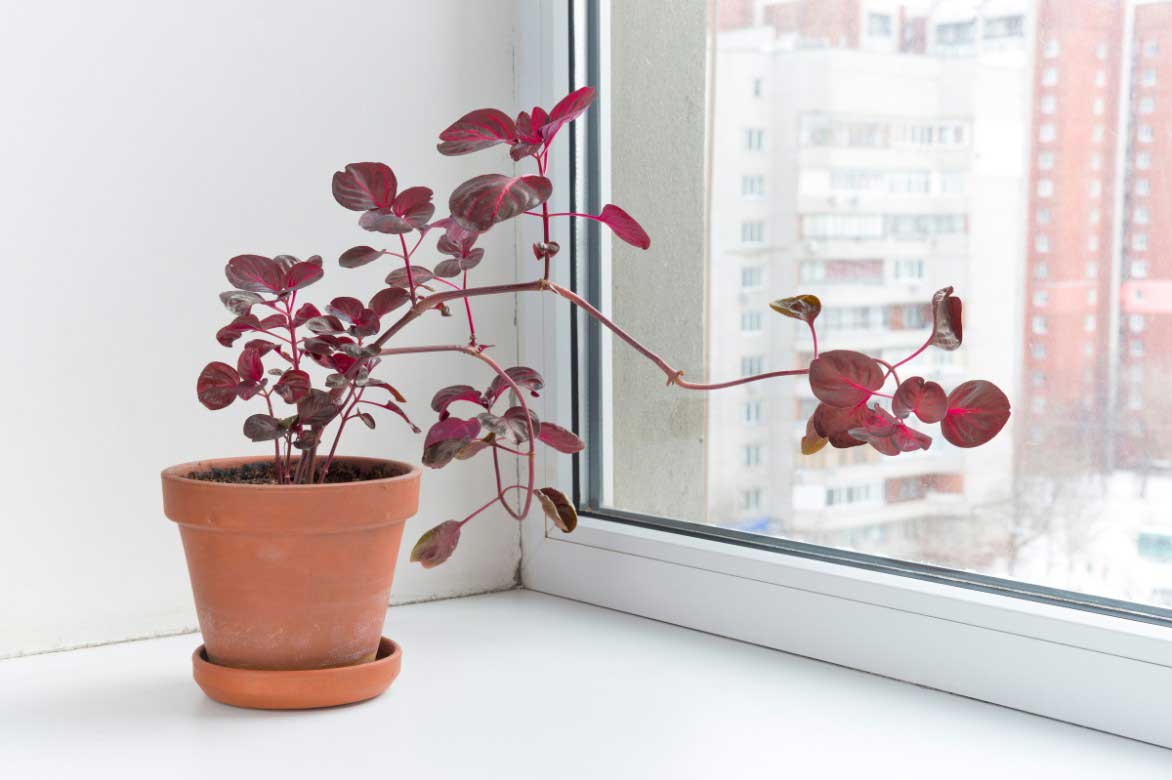
The ideal is to place Iresine near a window facing east or west, or with a sheer curtain to filter the light.
When to plant?
Iresine can be planted at any time of the year indoors, but spring remains the best season for repotting or placing it in a new container. This allows it to take advantage of the brightest months to settle in well.
How to plant?
Choose a pot that is slightly larger than the previous one to allow the plant to grow. It can be made of terracotta or plastic (terracotta promotes better root aeration but will require more frequent watering). The most important thing is that the pot is equipped with drainage holes to allow excess watering to escape.
Iresine prefers a light, rich, and well-draining potting mix. The ideal is to plant it in a mixture consisting of 2/3 potting soil for green plants and 1/3 perlite or coarse sand to improve drainage. It is also possible to add a bit of well-rotted compost to enrich the substrate.
Step-by-step planting:
- Place a layer of clay balls or gravel at the bottom of the pot to ensure good drainage.
- Add potting soil to the pot (up to about one-third of the pot’s height).
- Gently remove Iresine from its pot and lightly untangle the roots if they are too tightly bound.
- Position the plant in the centre of the pot, filling in with the remaining potting soil.
- Lightly firm down and water generously.
Remember to place a saucer under the pot, but ensure it does not retain standing water for too long.
Caring for Iresine indoors
A good indoor plant, Iresine is relatively easy to care for, provided it is given a suitable environment. Its main needs concern watering, light, temperature, and humidity. Regular care allows it to maintain its vibrant foliage and remain compact and vigorous throughout the year.
Watering
Iresine enjoys a fresh substrate but is sensitive to excess water, which can quickly lead to root rot. During the growing season, it is advisable to water regularly, generally once or twice a week, to keep the soil slightly moist. However, in autumn and winter, when growth slows and the plant receives less light, waterings should be spaced out. A simple check is to touch the surface of the potting mix: if it feels dry, it’s time to water. The key is to avoid waterlogging, as waterlogged soil is more harmful than a few days of moderate dryness.
Ambient humidity
Native to tropical regions, Iresine thrives in a slightly humid atmosphere. Air that is too dry, especially in winter due to heating, can lead to leaf desiccation or browning of the edges. To compensate, it is possible to mist the foliage regularly with non-limestone water, or place the pot on a bed of moist clay pebbles, which helps maintain suitable humidity without waterlogging the roots. In particularly dry interiors, a small humidifier can also work wonders.
Temperature
This tropical plant enjoys a warm and stable environment. It ideally grows between 18 and 24°C and is sensitive to temperatures below 12°C. It should therefore be placed out of cold drafts and sudden temperature changes. In a stable and bright environment, it will develop regularly and retain its colourful foliage.
Pruning
To maintain its compact habit and prevent it from becoming leggy, Iresine should be regularly pinched. This technique involves cutting the tips of young stems, which stimulates branching and encourages the appearance of new shoots. Occasionally, it is also useful to remove faded or damaged leaves to maintain an attractive decorative appearance. At the beginning of spring, a more severe pruning can be carried out if the plant has become too unruly: it will then regrow vigorously.
Fertilisation
Finally, the addition of fertiliser plays an important role in the health of Iresine. During its growing period, which is from spring until the end of summer, it is recommended to add a liquid fertiliser for green plants every two weeks. These regular applications support the plant’s vigour and enhance the colours of its foliage. In autumn, if the plant continues to grow, monthly fertilisation may suffice. In winter, it is best to suspend feeding, as the plant enters a phase of relative dormancy.
Diseases and pests
Indoors, Iresine is relatively robust, but like many ornamental plants, it can face certain issues related to its environment or the presence of pests. However, good observation and appropriate care can help prevent most of these inconveniences.
The main enemy of Iresine is excess moisture. Overwatering or a substrate that remains waterlogged encourages the appearance of fungal diseases, particularly root rot. The plant then shows signs of weakness, its leaves yellow and fall off. To avoid this problem, it is essential to ensure good drainage of the pot and to adopt measured watering practices.
Regarding pests, Iresine can sometimes be attacked by aphids, whiteflies (small white flies) or even red spider mites. Aphids and whiteflies feed on the sap of the leaves, causing a general weakening of the plant and the appearance of sticky or deformed leaves. Red spider mites, on the other hand, thrive in dry conditions, leaving fine webs and foliage punctuated with small yellowish spots.
To combat these invaders, several solutions exist. A lukewarm shower for the foliage may be sufficient to eliminate a small infestation. In more serious cases, a treatment with diluted black soap or neem oil can be applied. It is also advisable to isolate the affected plant to prevent the spread of pests to other plants in the home. Finally, maintaining good humidity in the air significantly reduces the risk of red spider mites appearing.
Thus, with careful monitoring and a few preventive measures, Iresine can maintain its health and vibrancy, even in an indoor environment where conditions are less than ideal compared to its native climate.
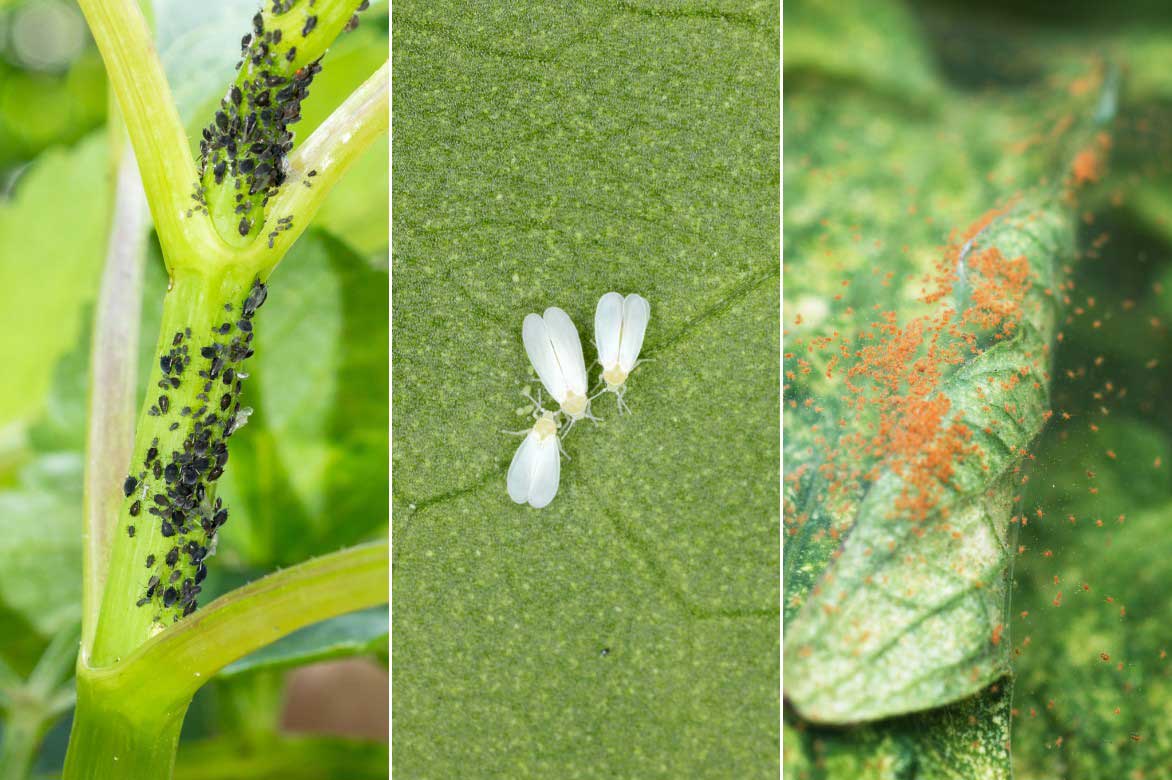
Aphids, whiteflies, and red spider mites
How to propagate Iresine?
Multiplying Iresine is a simple and rewarding task, ideal for renewing your plants or sharing this beautiful plant with your loved ones. The most effective technique remains propagation by cuttings, which ensures a high success rate.
When to propagate Iresine?
The ideal time to take cuttings is in spring and summer, when the plant is in full growth. During this period, it has all the energy needed to quickly develop new roots. Autumn and winter should be avoided, as the lower light levels significantly slow down the rooting process.
How to propagate it?
Propagation of Iresine is done using young, vigorous stems. Here are the steps to follow for successful multiplication:
- Take a healthy stem about ten centimetres long, preferably still flexible but well-developed.
- Remove the leaves from the lower part of the stem to free up space for root formation.
- Place the cutting either in a glass of clear water or directly in a small pot filled with a light, moist mix (seed compost mixed with a bit of perlite or sand).
- If you choose to root in water, wait for the roots to appear, usually within one to two weeks, then transplant the cutting into its final pot.
- Maintain good ambient humidity: you can cover the pot with a clear plastic bag to create a mini-greenhouse effect, ensuring to ventilate regularly.
Although using plant hormones can speed up root formation, it is optional: Iresine usually roots very well without additional help.
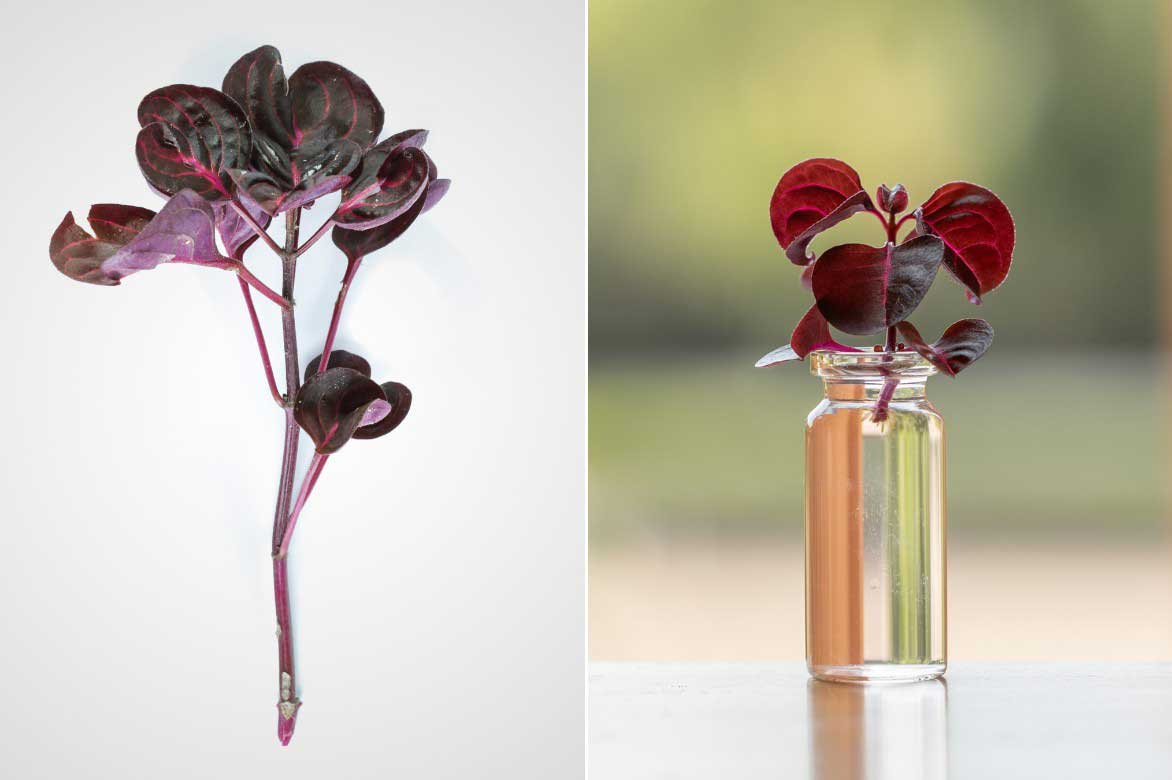
To propagate Iresine, take a stem by cutting just below a node, remove the lower leaves, then place the stem in water or directly in substrate.
How to showcase Iresine and which plants to pair it with?
Iresine, with its flamboyant foliage, stands out as a true star in indoor plant displays. It pairs particularly well with plants that offer a marked contrast in foliage, whether through colour, texture, or shape.
To highlight its red and purple hues, it can be combined with plants that have dark green foliage, such as Boston ferns (Nephrolepis exaltata) or philodendrons, whose large green leaves create an elegant backdrop for its vibrant tones. The contrast also works very well with calatheas and marantas, which feature variegated and colourful patterns while sharing similar humidity and warmth requirements.
In a more tropical setting, Iresine pairs beautifully with fittonia, whose small veined leaves echo the delicacy of its own patterns. The coleus, also known for its colourful foliage, can create a very dynamic and vibrant combination when placed nearby. To soften this brightness, chlorophytums or peperomias provide tender green shades and a trailing habit that visually balance the display.
If one wishes to play with shapes, graphic plants like sansevieria, zamioculcas, or dracaenas create an interesting contrast between their vertical lines and the bushy density of Iresine. Finally, in a softer and more romantic decor, it harmoniously combines with rex begonias, whose silver or pink-tinged leaves elegantly converse with its purple foliage.
Thus, Iresine can be the centrepiece of a mixed pot or simply the element that enlivens a collection of more classic green plants. The key is to ensure that species sharing similar needs for bright light and regular watering are grouped together, to guarantee a successful and lasting cohabitation.
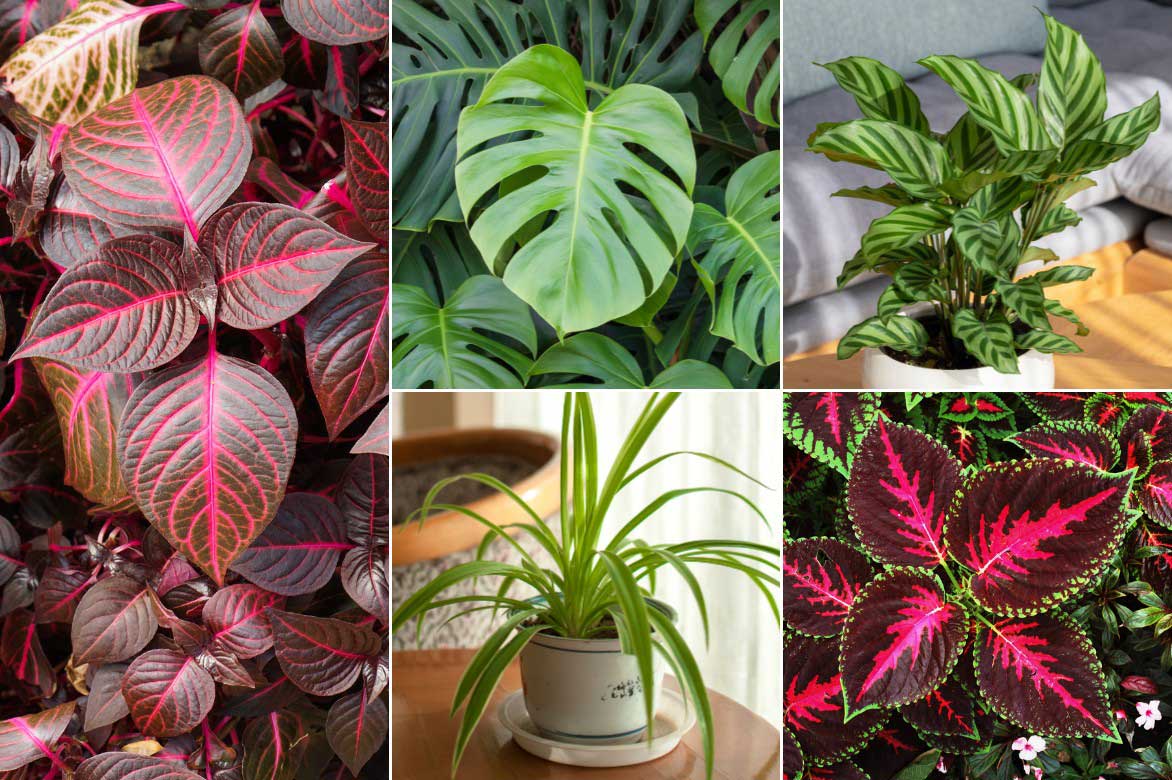
Iresine, Monstera, Calathea, Chlorophytum, and Coleus
- Subscribe!
- Contents
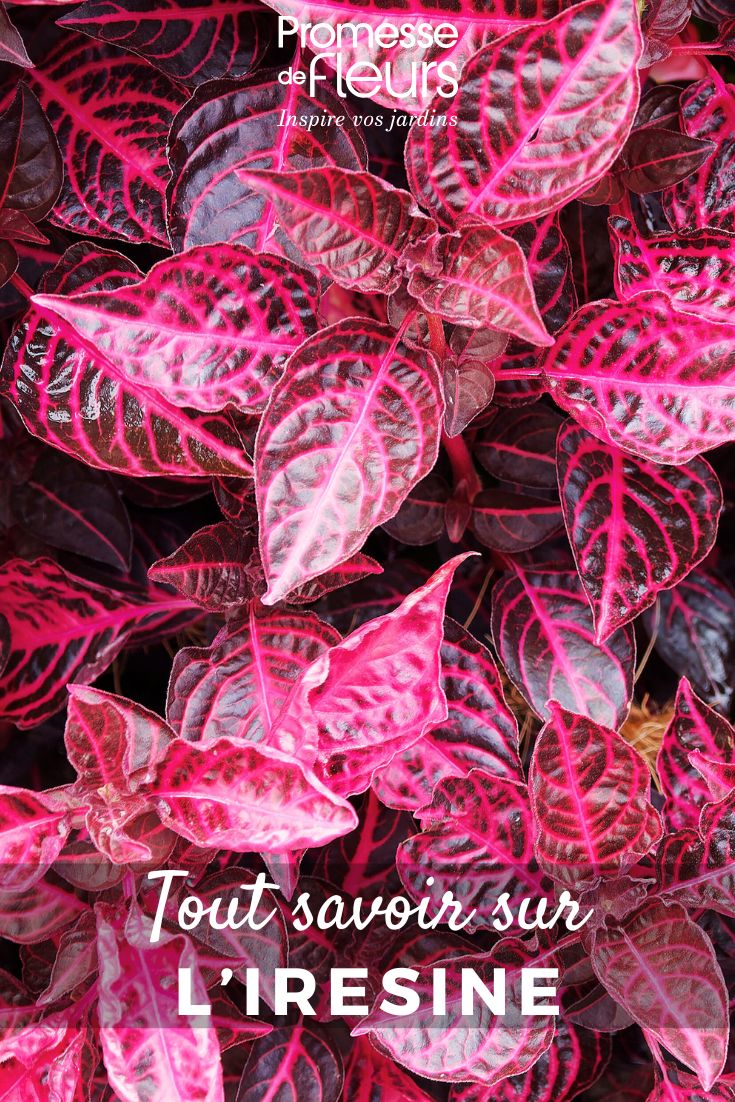































Comments